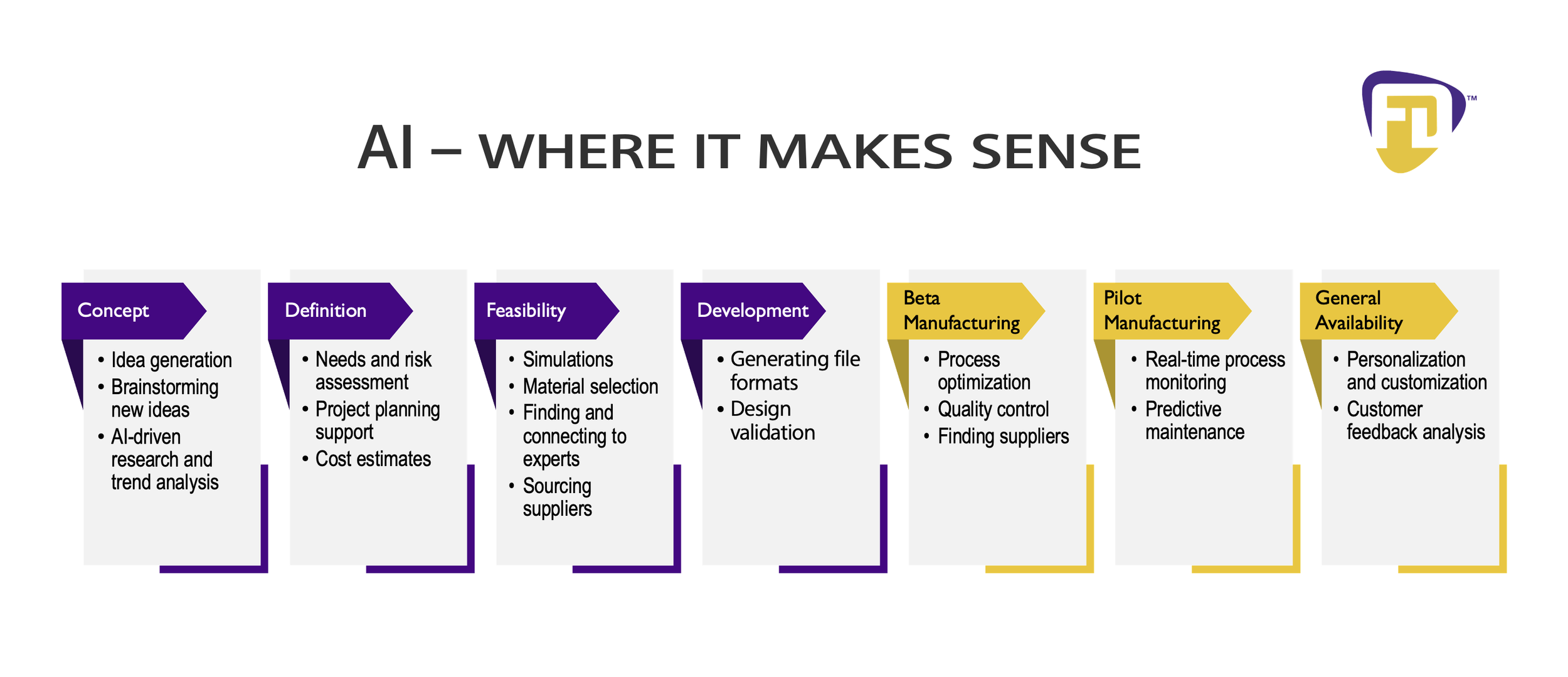This article looks at how engineering teams can leverage AI tools to augment in-house experts. We focus on practical use cases and strategies that help teams succeed. We have found that AI can take over tedious design tasks—like technical background research —giving engineers more time to create and innovate.
AI Tools in Engineering: Adoption and Use Cases
Here are some use cases that allow us to design more quickly using AI-based tools.
One use case that saves us a lot of time is research. You can ask these tools to find an adhesive that cures in 10 minutes, withstands specific environmental conditions for five years, is affordable, and is sourced from China.
This search involves identifying adhesive manufacturers, particularly in China, and determining which offer suitable options. Additionally, AI can help identify the best materials that pair with the adhesive for specific applications. This approach of asking AI nested questions helps streamline the material selection / sourcing process. Using AI can drastically speed up this process by quickly pinpointing relevant products, allowing you to narrow your selection, and focus on acquiring samples.
A second use case is idea generation. A recent challenge was finding a way to remove tough materials used on roads from the metal templates that help create them. AI-generated multiple ideas, most of which were not great, but they sparked new solutions and proved valuable for idea generation. AI is also useful for quickly identifying industry experts by analyzing published works.
Looking ahead, we believe that AI will provide greater support for design-related tasks. In particular: generating fabrication prints for manufacturing and handling design rule-driven processes like cable routing. AI can cut the cycle time for design iterations, enabling more options to be explored for a better overall outcome and quicker time to market. We don’t believe it will take over all of the design tasks but can certainly continuously help us improve our output.
New Product Development Stages
AI Augmentation Flowchart
Below is a flowchart highlighting key process stages and where AI might augment activities.
Adding Value
AI excels at handling repetitive, data-intensive tasks like research, measurement, and large data assessments, significantly speeding up processes for engineers. However, it lacks on-point creativity (IMO), serving more as an inspiration tool than a creative solution generator in technical fields.
The ability to deliver innovative new designs is critical to staying ahead of the competition and achieving sustainable growth. AI can is one more effective tool to hasten innovation in the process.
A couple of tasks to consider off-loading to AI:
Rule-driven processes
Low-value tedious operations
Largest source of errors introduced by manual processes
Materials and sourcing research
Industry expert searches
Very specific process knowledge on-demand
Summary
AI has the potential to handle design rule-driven tasks, freeing engineers from repetitive work and speeding up the process. Engineering managers must balance learning and experimenting with the need to meet commitments to customers, partners, and teams
